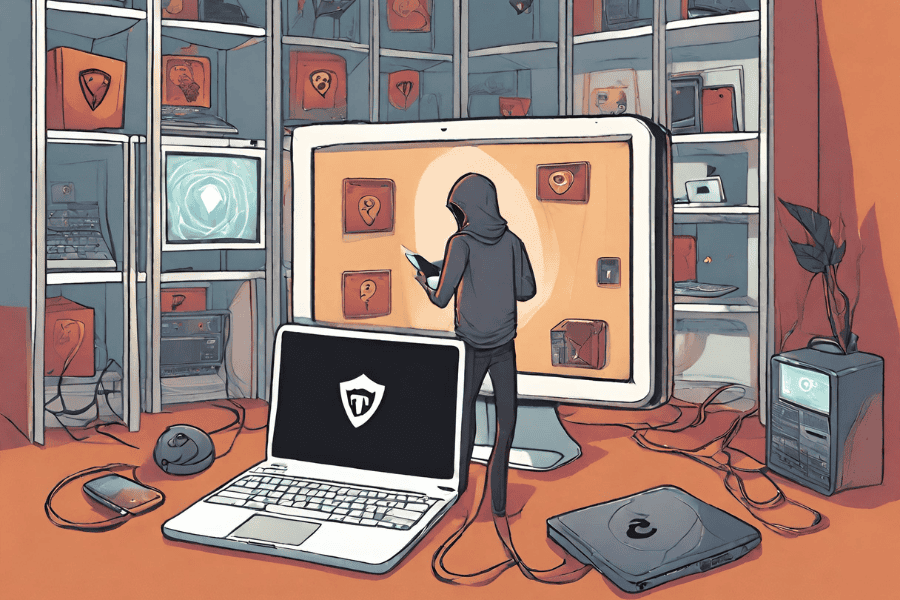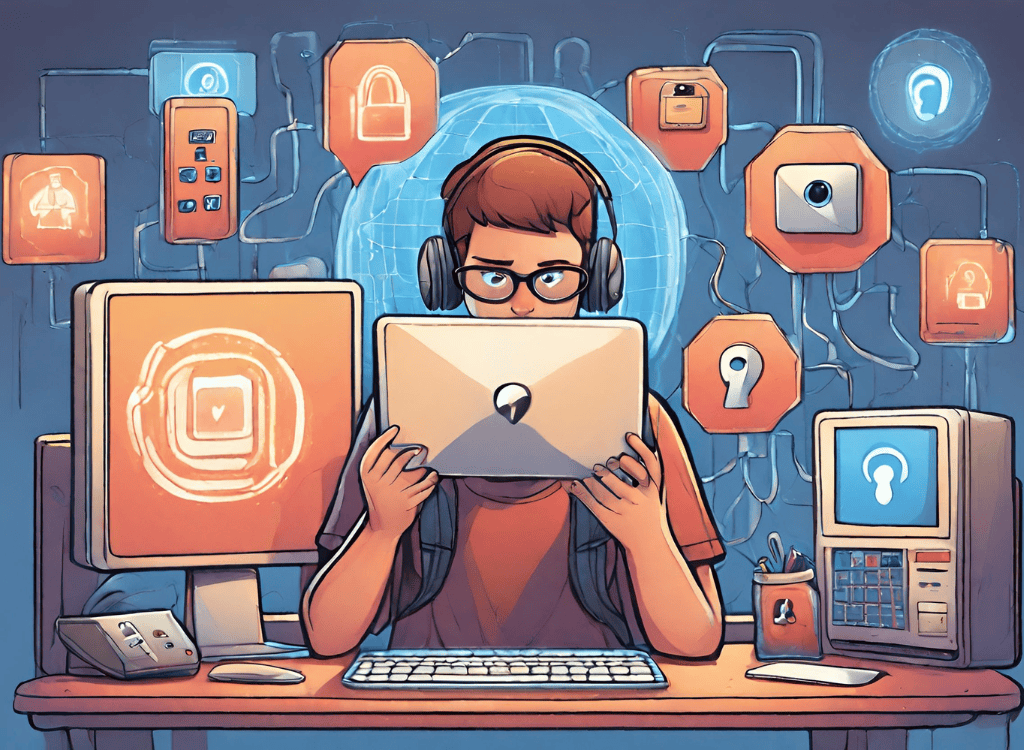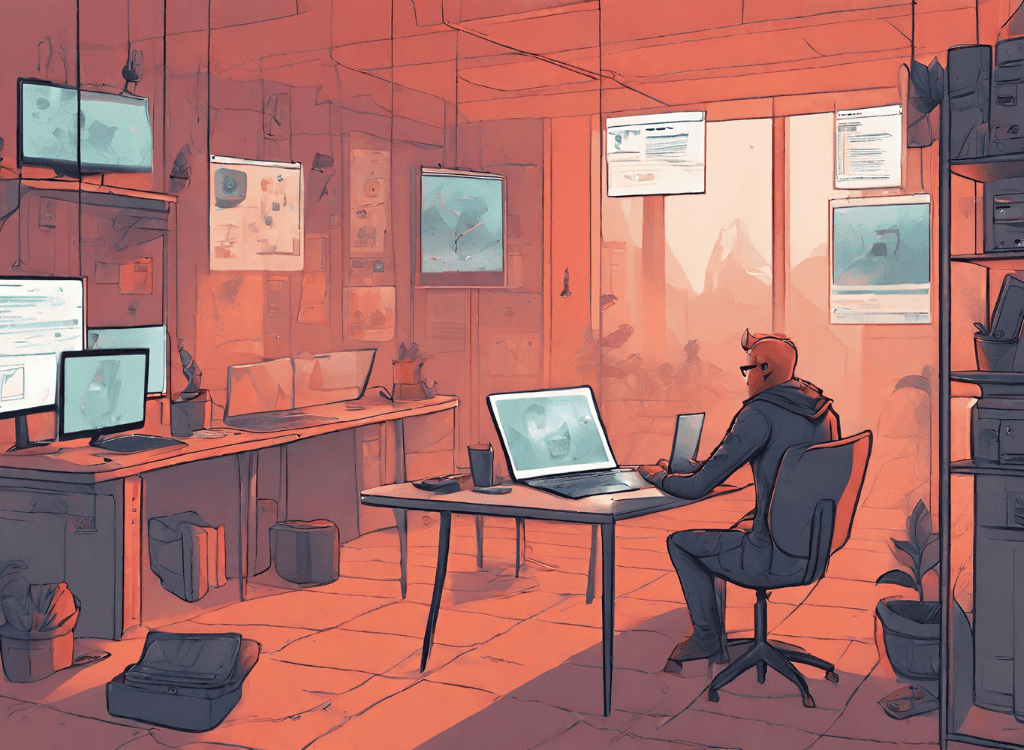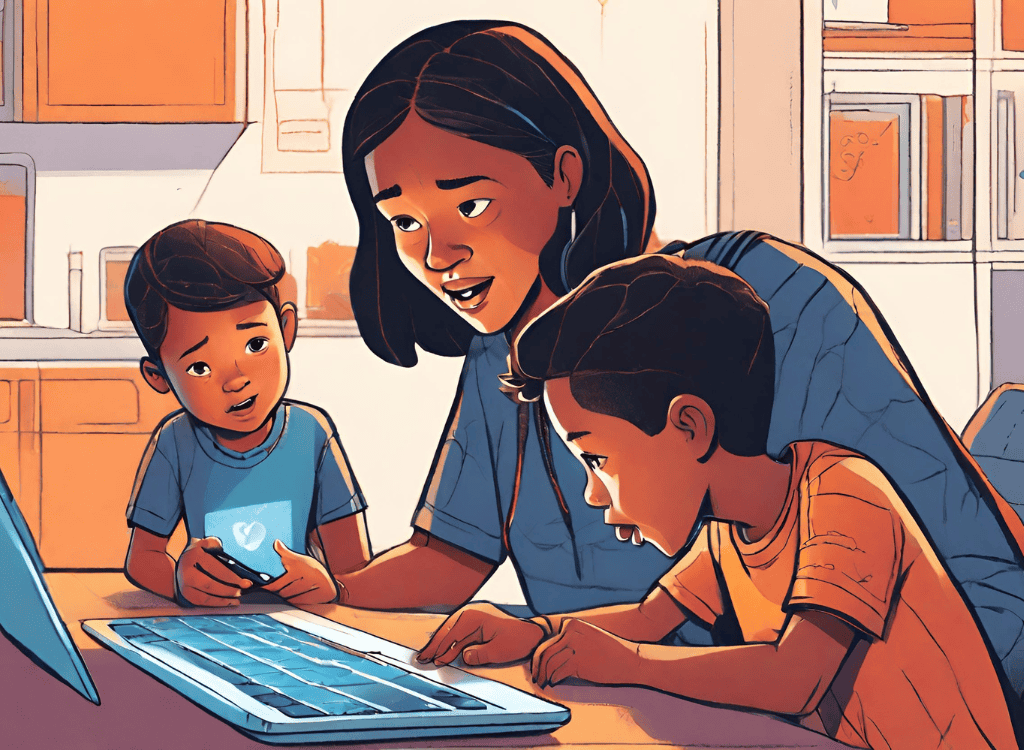The Top 5 Internet Safety Risks for Kids and How Parents Can Mitigate Them

Over the past few decades, the internet has become an integral part of our children’s daily lives. From educational resources like school workto social media and streaming platforms for entertainment, kids are spending more time online than ever before. With this increased screen time comes big safety risks that every parent should be on the lookout for. Our goal of this article is to dive into the top five online safety risks for kids and explore how you, as the parents, can effectively mitigate them and teach your child to look out for them too.

Why is Internet Safety Important for Kids in Today’s Digital Age?
As our children grow up in a world filled to the brim with technology, their understanding the importance of internet safety is critical. The online world, while offering countless opportunities for learning and growth, also poses significant dangers that can impact your child, both emotionally and physically. These risks range from cyberbullying to exposure to inappropriate content to online predators. Parents need to take a proactive and hands on approach to ensure their children’s safety online. We are here to help!
What are the Potential Dangers Kids Face Online?
Children today are particularly vulnerable online due to their curiosity and very limited understanding of the potential dangers of the world. Back in the day, we as parents, only had ‘stranger danger’ to worry about in the physical sense with a van filled with free candy, but children today are bombarded with online hazards daily.
Some of the most common dangers include cyberbullying (both from peers and internet strangers), exposure to inappropriate content, online predators, and privacy breaches that are aimed to steal your personal information. Without the proper guidance of a parent or caregiver and also using the right protective measures, these risks can lead to severe consequences, including emotional distress, compromised physical safety, and unfortunately long-term psychological effects.

Overview of the Top 5 Internet Safety Risks
Here are the top 5 internet safety risks that parents should be aware of:
- Cyberbullying: The Emotional Toll
- Inappropriate Content
- Online Predators
- Privacy and Data Security
- Excessive Screen Time and Its Effects
Let’s dive deeper into each of these risks and how you, as a parent, can guide your child away from them to keep them safe.
Cyberbullying: The Emotional Toll
Cyberbullying is one of the most significant internet safety risks for children today. Unlike traditional bullying, cyberbullying can happen at any time and in any place, often leaving children feeling helpless and isolated. They can be bullied on social media apps, while playing video games, or through chatting apps. Once something is said or posted online, it can spread like wildfire in minutes if the wrong person shares it. According to recent studies, over 20% of students aged children (ages 12-18) have experienced cyberbullying. The emotional toll of cyberbullying can be devastating, leading to anxiety, depression, and in severe cases, even self-harm.
How to mitigate cyberbullying:
- Educate your child about the importance of showing kindness and respecting others online. We all teach our child to be kind to those around them, but sometimes behind a screen name they can be cruel. It’s not just kids, adults can be just as mean when interacting online. We all need to take note to teach our children internet kindness, just as much as we teach in person kindness. Even just sharing a mean post can be harmful to someone.
- Encourage open communication, so your child feels comfortable sharing their experiences. You want your child to feel comfortable talking to you about what is going on online and not trying and hide it. They can feel embarrassed or ashamed and that can lead a child not to talk to you, so open dialogue is important.
- Utilize parental control apps to monitor online interactions and detect potential cyberbullying incidents early. Putting simple systems in place like the Nutcracker can catch cyber bullying before it gets out of hand.
Inappropriate Content
The internet is filled with content that isn’t suitable for children, including violent videos and videogames, explicit images, and even harmful ideologies. Even seemingly innocent searches can lead to exposure to age-inappropriate content. Most of us have searched for something and quickly realized we accidentally searched for a slang term! Kids don’t know any better and can then be exposed to the wrong things very quickly. Examples like these are why it’s essential to implement kid friendly content filters and keep a close watch on your child’s online activities.
How to protect your child:
- Set up content filters on all devices and real time updates that alert you quickly to potentially dangerous online activity before it’s too late.
- Regularly review their browsing history and app usage. A quick scan can reveal potential risks to put a stop to immediately.
- Discuss the importance of not clicking on suspicious links. We have all heard stories of kids who click a pop up and they purchased a game or toy without the parents knowing until it shows up at home or they see the charge on their credit card. Or even worse, they can click on a link that harms your device or even steals your personal data.
Online Predators
A very serious threat, often posing as peers to befriend children with the intent of exploitation or things even worse. These predators can be found on all of the social media platforms, gaming sites, and even educational forums. You never know who is lurking behind a screen name. Teaching your child about the dangers of interacting with strangers online is vital. Stranger danger isn’t just a physical danger anymore, it’s online danger too.
How to protect your child:
- Educate them about the dangers of talking to strangers online. Even if someone says they are a child, they can be pretending to get an ‘in’ to talk with your child.
- Keep an eye on their friend lists and online interactions. Ask your child “who is this person and where do you know them from”? Teach them not to accept just anyone that is asking to be their online friend. Checking their online messages and chats is important too.
- Use apps that alert you in real time when your child is communicating with unknown individuals. The real time alerts are key times catching potential predators quickly. If you find nd out weeks or months after your child has been talking to someone, it may be too late.
Privacy and Data Security
Children may not understand the implications of sharing personal information online. All that someone on the dark web needs is a name and birthdate and they can find your information. Unfortunately, this can lead to identity theft, financial fraud, or something even worse. Kids need to learn the importance of online privacy and the risks of oversharing. They may think their new online gaming friend is just chatting, but they could be phishing for information. A simple conversation can lead to disclosing too much information.
How to protect your child:
- Teach them to keep personal information private. Kids often have no filter and can I knowingly share their personal information with the wrong person.
- Set all of their social media accounts to private. No one but friends should be able to see their picture. There are stories where someone posted a video of a child wearing a school shirt and a predator was able to find them and go to their school. Keeping profiles private and restricted to friends (that an adults verified) is critical.
- Use parental control apps that monitor data sharing and online privacy settings. Quick scans of their Internet usage can potentially stop a problem before it’s too late.
Excessive Screen Time and Its Effects
Excessive screen time is a growing concern society as a whole, but especially parents. Not only can it affect your child’s physical health (like eye strain and poor posture), but it can also lead to behavioral issues, such as addiction to online gaming or social media. Balancing screen time with other activities that include physical play is crucial for your child’s development. Limiting screen time to a certain amount of time a day or week is important but also making sure they get a physical activity, even if it just a family walk around the park, is just as important.
How to manage screen time:
- Set clear rules and time limits for all device usage. Model this behavior with your own screen time as well. It is said that more is “taught than caught”.
- Encourage outdoor activities and offline hobbies. Have your child learn a new sport or go to the park with them to meet new friends. Find a club or activity they can do that doesn’t involve screen time.
- Use parental control apps to enforce screen time limits. You can set daily or weekly screen time limits to avoid too much time online.

Parental Controls and Monitoring Tools
In today’s digital world, parental controls and monitoring tools have become essential for protecting children online.
Nutcracker is an important tool that allows parents to set their own screen time limits that is best for their child, block inappropriate content they fele their child should not see, and monitor their child’s interactions across multiple platforms and apps in case there is inappropriate interactions. By using the Nutcracker platform, you will receive real-time alerts sent to your phone and view detailed activity reports the review behaviors, helping you stay informed about your child’s online activities and have the ability to intervene quickly if needed. Ensure a safe digital environment for your child and protect their mental development by checking out our product now!
Open Communication and Building Trust
When children feel comfortable discussing their online experiences with their parents without judgment, they are more likely to share any concerns or issues they may encounter or hear about their friends experiencing. Building this needed trust empowers children to navigate the digital world with both confidence and with caution.
The Nutcracker platform emphasizes the importance of open communication between parents and their children and helps aid in the online safety process. Our platform includes helpful resources that help you have meaningful conversations with your child about their safety online, ensuring they understand the risks and feel comfortable coming to you with any concerns.
How Does Nutcracker Help Parents Reduce Internet Security Risks?
At Nutcracker, we understand that navigating the online world can be tricky for both parents and
children and we want to help equip you from your success. That’s why our software is designed to empower you as the parents with the tools you need to monitor and protect your child’s online activity effectively.
In today’s ever changing digital world, keeping kids safe online requires a proactive approach. By understanding the top internet safety risks and taking steps to mitigate them, you can protect your child from the potential dangers that lurk online. Nutcracker is here to support you every step of the way, providing the tools and resources you need to ensure your child’s safety in the digital world. Don’t wait any longer—take control and ownership of your child’s online safety today with Nutcracker!
